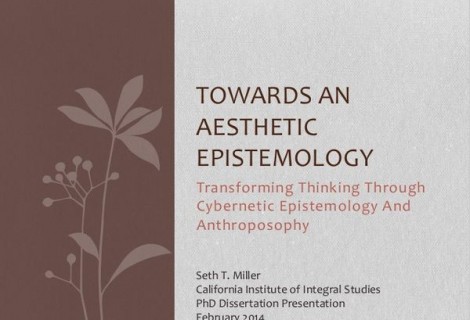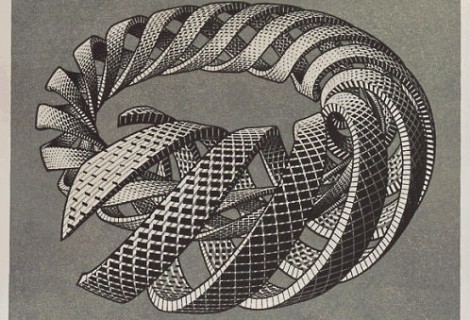Patterns in Process: Transdisciplinarity as a Background for Working with the Elemental Cycle of Transformation
« Previous Page | 1 2 3 4 5 6 7 | View All | Next Page »
Assumptions
My own approach is aligned with the above authors, and I consider it to be an extension of Klocek’s work. The fact that the above authors (and I as well) identify as an inspiring source the works of Rudolf Steiner means that a number of assumptions are made that inform a background to the topic of transformation. Most importantly is the assumption that transformation is never an isolated event, but is contextually embedded both in physical processes as well as spiritual processes. Direct understanding and work with the context(s) of transformation is necessary, because the context is both epistemologically and ontologically significant. Additionally, it is assumed that the physical and spiritual processes do not have a dual, Cartesian-type relation, but are co-incident and co-evolutionary; they are mutually reinforcing and creating, even co-constitutive. The ‘outside’ world, therefore, is not treated in a reductionist, ‘objective’ way (characterized by Morin as “simple thought” (Morin, 2008, p. 4)), because it is understood that the outside and inside are directly linked. Neither is it treated in a purely subjective way; it is assumed that through specific processes, human beings can learn how to be aware of the extent to which personal attributes and epistemological habits color one’s perception; this opens up the possibility of new ways of perceiving and thinking that don’t rely so much on what is given as what is possible.
I assume that something of the essential nature of what it means—of what it is—to be human centers on our capacity for transformation: we are beings built for the creative embodiment of transformation. I assume that transformation doesn’t happen arbitrarily, randomly, or nonsensically (despite how it may seem at times) and that there is good reason to believe that patterns which structure and inform transformative processes can be conceptualized and utilized. I assume that processes which do flow with these patterns in a lawful way will produce effects and transformations which will be qualitatively and significantly different (more coherently connected to lived experience and contextual meaning, longer lasting, leading to greater involvement with self and others and leading to even further transformations, etc.) than processes which do not flow with the patterns. A more basic assumption, implicitly mentioned above, is that transformation always touches the spiritual in the human being, and thus a consideration of spiritual context and processes is both useful and important if we wish to deal with the resolute complexity of transformation, avoiding the various critiques of Gordon, Montuori, Morin, Nicolescu, and Wilshire.
Some Sources
There appear to be no scholarly journals which have dealt with this topic. Therefore, I have had to cast a wider net to find related works. Generally speaking, this topic concerns the process or stages of transformation; the academic area with the greatest number of publications on this theme is psychology, although there are some related articles in journals dealing with education, management, philosophy, anthropology, and religion. Within psychology, the most relevant literature comes from the realm of depth psychology, which, linked to Jung, includes a non-trivial understanding of alchemy as an ongoing thematic reference.
A general survey of the available literature shows that transformation has been identified as occurring primarily in and through very specific contexts:
- dealing with addiction (alcohol, smoking, eating)
- suffering, illness, loss, near death experiences, and/or trauma
- existential crises
- psychotherapy and/or group work
- spiritual and/or meditative practices
- education and/or adult learning and self improvement
- political action
- parenting (and other life-transitions)
Most articles and dissertations deal with only one area of transformation, and make only very limited claims with regards to application in diverse situations. Some mention stages of transformation; almost all are qualitative, with the major methodologies spanning grounded theory, phenomenology, heuristics, and some narrative analysis, along with theoretical or reflective works.
With regards to stages of transformation, much foundational work has been done by Arnold van Gennep (Gennep, 1960), who identified three stages in ritual transformation: preliminal, liminal, and postliminal. Following Gennep, Victor Turner kept the three-stage model (separation, liminal, reaggregation) but focused on the liminal stage (Turner, 1969). Joseph Campbell was influenced by these models and used them as the basis for his treatment of the archetype of transformation expressed in the three stages of the Hero’s journey: departure, initiation, and return (Campbell, 1949).
My own interest is not specifically with transformative ritual or mythology, but rather with what Gregory Bateson might call “the pattern that connects” these areas (Bateson, 2002). I’m looking at a pattern which acts across scales, and thus can apply to ritual transformation as well as to smaller, non-ritualized transformations that are a part of the natural flow of daily life, such as shifts in perspective through casual conversation, or transformations across whole life-stages. The approaches of Gennep and Turner are firmly anthropological, and approach transformation primarily as a cultural phenomenon (i.e. through a shared language of ritual); I am interested in patterns of transformation that span personal, social, and transpersonal (spiritual) realms, across boundaries of gender and culture.




